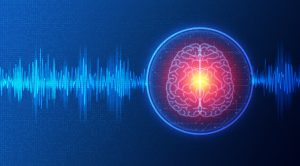How Adaptive DBS Aims to Offer More Personalized and Effective Therapy

When the Food and Drug Administration (FDA) approved deep brain stimulation (DBS) for Parkinson’s disease (PD) in 2002, it revolutionized the PD treatment landscape. DBS has since become a very effective therapy for certain patients whose symptoms are no longer adequately controlled by medication alone. Over the last decade, multiple advances in DBS technology have made this treatment even more helpful and usable. Now, the technology has entered a new era – one that can respond in real time to the brain’s needs, which aims to offer more personalized and effective therapy than ever before. In this article, we’re taking a closer look at the development of adaptive DBS and the hope it offers for the future of PD treatment.
What is Adaptive Deep Brain Stimulation?
DBS is often described as a “pacemaker for the brain.” It involves implanting electrodes deep within specific areas of the brain (for PD, this usually involves the subthalamic nucleus or globus pallidus internus) and connecting them to a small device implanted under the skin near the chest. This device, called an implantable pulse generator (IPG), sends electrical impulses to modulate abnormal brain activity and rebalance the electrical circuits involved in motor control. The therapy can dramatically improve tremors, stiffness, and slow movements – and allow for reductions in medication dosage.
However, traditional DBS is static. Clinicians set the stimulation parameters manually during doctor visits, based on patient feedback and observed symptoms. The brain’s needs, however, change throughout the day, depending on activities, emotional states, and medication cycles. This is the problem that adaptive DBS addresses.
Medtronic’s BrainSense™ technology is the first FDA-approved DBS system that senses brain signals – specifically, local field potentials (LFPs) – in real time and uses this information to adapt stimulation settings. The implanted electrodes not only deliver electrical stimulation but also record electrical activity from the brain. BrainSense analyzes this activity and identifies biomarkers associated with worsening PD symptoms. When certain brainwave patterns emerge, such as those linked to tremor or stiffness, the system can automatically adjust the level or pattern of stimulation to better control symptoms. This adaptive – or “closed-loop” – DBS means that instead of operating blindly, the system is listening and responding to the brain, tailoring therapy moment-by-moment.
The Development of BrainSense Adaptive DBS
This new technology was built upon years of research into the brain’s electrical signatures in PD. Studies found that elevated beta-band oscillations (brainwave activity in the 13–30 Hz range) are strongly correlated with motor symptoms like rigidity and slowness. Armed with this knowledge, engineers and neurologists collaborated to design a system that could continuously monitor these biomarkers and dynamically modulate therapy.
A pivotal study, which led to FDA approval, called ADAPT-PD (Adaptive DBS Algorithm for Personalized Therapy in Parkinson’s Disease) evaluated the safety and effectiveness of adaptive stimulation compared to traditional DBS. Results showed that patients using adaptive DBS experienced significant improvements in “on” time without troublesome dyskinesias, needed lower overall stimulation energy, and reported better quality of life scores.
Additionally, the PerceptTM PC neurostimulator – the device incorporating BrainSense – was validated for its ability to accurately and safely record LFPs in real-world settings over extended periods. This was a major technical feat, considering that the device had to record delicate brain signals while also delivering powerful electrical pulses.
In March 2025, a patient at UCHealth University of Colorado Hospital became the first patient in North America following FDA approval to utilize this new adaptive DBS technology in a clinical (and not a research) setting for PD. As adaptive DBS is implemented more widely, data will continue to be collected as to whether it improves the day-to-day lives of people over standard DBS.
Looking Forward: Artificial Intelligence, Telemedicine, and More
In the future, adaptive DBS could be combined with artificial intelligence (AI) algorithms to create even more sophisticated closed-loop systems. Imagine an AI that can learn from individual patient patterns over time, predict symptom fluctuations before they happen, and adjust stimulation proactively. AI has the potential to help optimize stimulation schedules, predict medication needs, or even integrate with wearable devices like smartwatches to track movement and tremors continuously.
There is also exciting potential for telemedicine integration. With remote monitoring, doctors could analyze brain data in real time and fine-tune therapies without the patient needing to travel to a clinic. This would be an invaluable option for those living far from specialized centers.
Moreover, researchers are exploring whether adaptive DBS could extend beyond motor symptoms to treat non-motor symptoms of PD, such as anxiety, depression, or cognitive decline, by targeting different neural circuits.
This blog was written by Clark Jones, PhD, and was reviewed, edited, and approved by Dr. Rebecca Gilbert.
Tips & Takeaways
- Since 2002, deep brain stimulation (DBS) has become a very effective therapy for certain Parkinson’s disease (PD) patients whose symptoms are no longer adequately controlled by medication alone.
- Now, DBS technology has entered a new era – one that can respond in real time to the brain’s needs, which aims to offer more personalized and effective therapy than ever before, via Medtronic’s BrainSense adaptive DBS system.
- In February 2025, the FDA approved BrainSense, recognizing it as a groundbreaking advancement that could offer safer, smarter, and more responsive therapy for PD patients.
- This adaptive DBS system was built upon years of research into the brain’s electrical signatures in PD, and before securing FDA approval underwent rigorous clinical trials.
- In the future, adaptive DBS could be combined with artificial intelligence (AI) algorithms to become even more sophisticated. There is also exciting potential for telemedicine integration. And researchers are exploring whether adaptive DBS could extend beyond motor symptoms to treat non-motor symptoms of PD, such as anxiety, depression, or cognitive decline.
- As adaptive DBS is implemented more widely, data will continue to be collected as to whether it improves the day-to-day lives of people over standard DBS.
